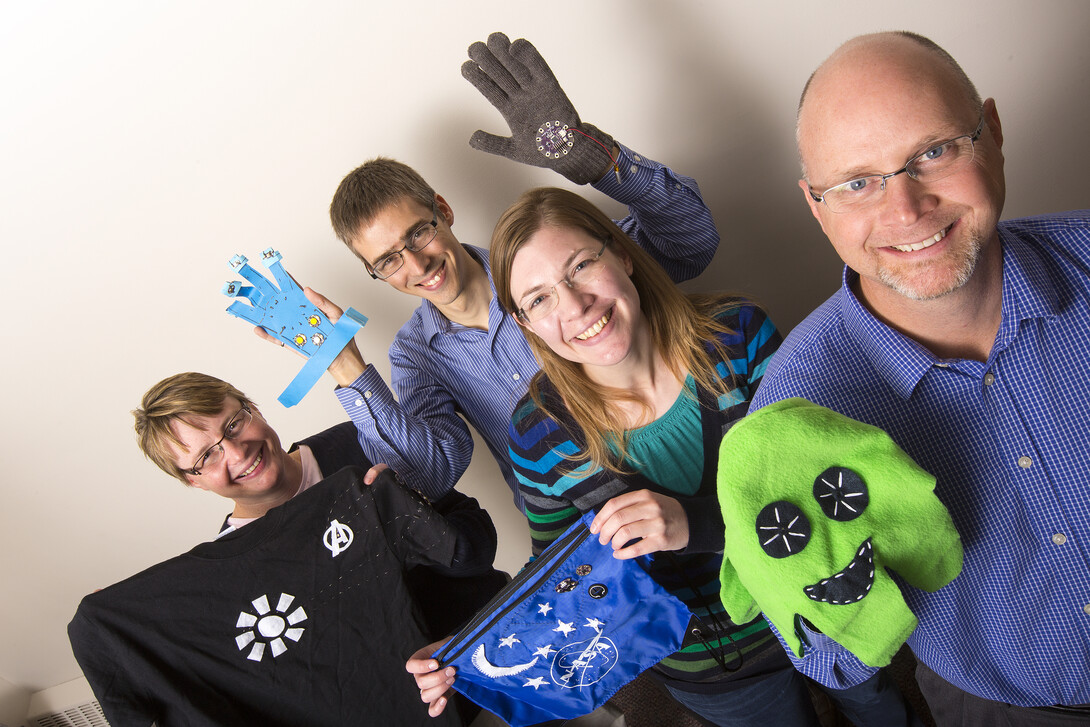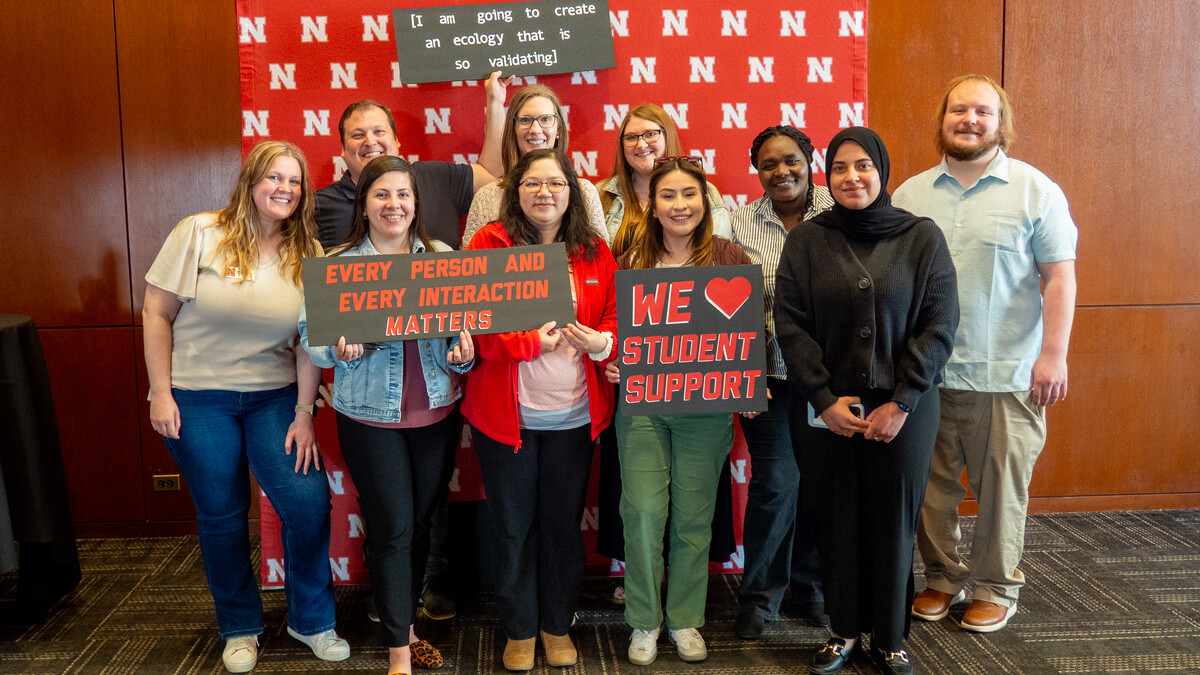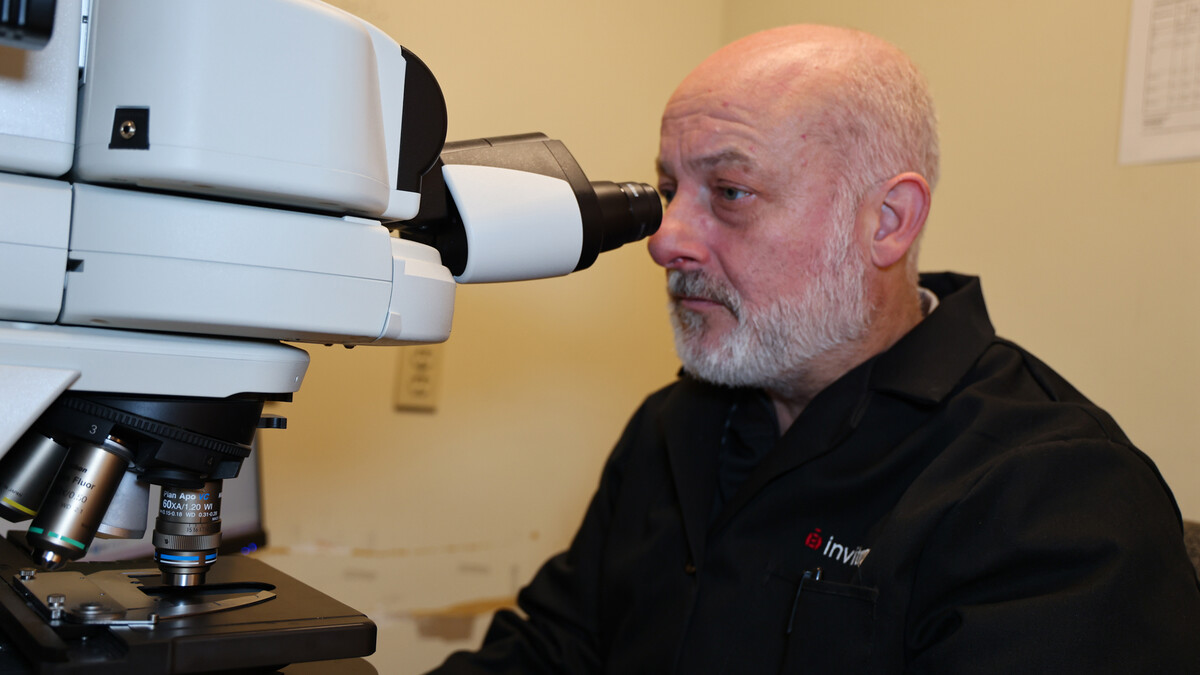
Sensor-embedded shirts. Bluetooth-enabled shoes. Camera-equipped glasses.
The age of “wearable technology” has arrived, and with it a potential avenue for engaging elementary students in the STEM fields of science, technology, engineering and mathematics.
With nearly $1 million of support from the National Science Foundation, an interdisciplinary team from UNL and UNO is crafting a curriculum that will allow students to learn the science behind the fashion-forward technology.
Spanning both classrooms and after-school programs, the three-year project will offer inquiry-based activities to roughly 900 students in grades 4-6 who attend public school in Nebraska.
The curriculum will give students access to kits featuring conductive thread, LED lights, sensors and other components commonly found in high-tech garments. Students will also work with microcontrollers, which include miniscule circuit boards that can be programmed to direct the various devices attached to them.
The research team envisions such activities helping students learn basic principles of engineering design – including electricity and circuitry – that they can then apply to create LED-encrusted bracelets and other apparel.
“It’s hands-on, minds-on (activity), and all of the technology is exposed,” said Brad Barker, UNL associate professor and 4-H science and technology specialist. “They’re manipulating an object in the real world. We’re hoping to teach these students to think like engineers, and wearable technology is the vehicle that we’re using to do it.
“The next science standards specifically focus on engineering, but engineering traditionally is not taught in schools, especially at these grades. We saw an opportunity to fill that gap with this new curriculum.”
The research team will subsequently examine whether the curriculum enhances students’ engineering-related knowledge, skills and attitudes – particularly their interest in the field’s many potential careers.
“This is an age when students are very impressionable,” Barker said. “By fourth or fifth grade, many are self-selecting out of science and engineering. We think an intervention at this age group could be especially important for keeping them interested.”
Barker’s team also aims to determine whether wearable technology encourages more STEM participation among females and other traditionally underrepresented groups. A pilot study conducted in the summer found that girls constituted roughly 60 percent of participants.
The historical lack of female engineers mirrors an emerging shortage of engineering professionals as a whole, Barker said. Yet he also noted that this trend runs counter to the exponential prospects of wearable technology, which industry experts have projected could grow from $12 million to more than $18 billion in annual sales by 2017.
The multidisciplinary nature of the technology is reflected in the composition of Barker’s team, which includes Gwen Nugent, research professor at UNL’s Nebraska Center for Research on Children, Youth, Families and Schools; Carl Nelson, UNL associate professor of mechanical and materials engineering; Jennifer Melander, UNL assistant professor and science literacy specialist; Neal Grandgenett, UNO community chair of STEM education; Kim Larson, coordinator of professional development for the 21st Century Community Learning Centers Program; and Michelle Krehbiel, UNL assistant professor of youth development.







